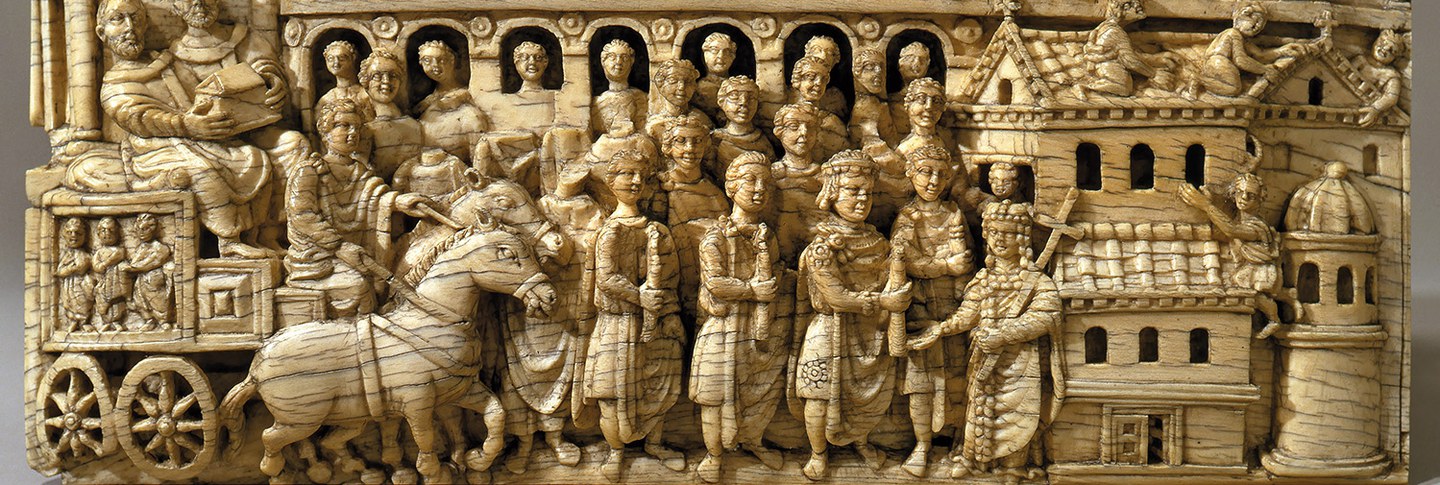The annual Byzantine Studies symposium, “Processions: Urban Ritual in Byzantium and Neighboring Lands,” was held April 12 and 13 and was organized by Leslie Brubaker (University of Birmingham) and Nancy Ševčenko (independent scholar), with support from Anna Stavrakopoulou and Eden Slone.
Military, civic, and religious processions were hallmarks of the ancient and medieval world; they continued into the Renaissance and, indeed, continue to this day. The conference speakers examined a large variety of texts, artifacts, and images to develop a new understanding of medieval urban life across multiple social registers. Studying processions introduces us to new protagonists, because processions involve audiences and other groups hitherto virtually invisible (such as the team of people who prepared for the event by decorating the streets). The presentations offered ample, multifaceted evidence that the Byzantine commitment to processions was striking in terms of the resources and time allocated: there were as many as two processions a week in Constantinople, many involving the patriarch and the emperor. In the Latin West, the Crusader States, and in the Fatimid, Ottoman, and Muscovite worlds, by comparison, processions occurred far less frequently: the procession was significantly more important to the Byzantines than to their neighbors and successors. The comparative study of Byzantine processions offered by the speakers at the symposium revealed how the Byzantines operated in a complex global network defined by local contexts, how they positioned themselves within this network, and the nature of the Byzantine legacy to the Eastern and Western inheritors of their culture.
Speakers from Greece, Italy, Turkey, the United Kingdom, and the United States—Nathanael Andrade (Binghamton University), Christine Angelidi (Institute of Historical Research, National Hellenic Research Foundation), Leslie Brubaker (University of Birmingham), Michael Featherstone (Centre national de la recherche scientifique; University of Fribourg), Michael S. Flier (Harvard University), Georgia Frank (Colgate University), Niels Gaul (University of Edinburgh), Çiğdem Kafescioğlu (Boğaziçi University), James Norrie (University of Oxford), Sebastián Salvadó (independent scholar), Paula Sanders (Rice University), and Alexandra Vukovich (University of Oxford)―addressed topics in Byzantine, Western medieval, Slavic, Islamic, and Ottoman studies, in the fields of history, philology, religious studies, and art history. Presentations covered processions in late antiquity; in early, middle, and late Byzantine Constantinople; in Milan, Rome, Jerusalem, Egypt, North Africa, and Iberia; in early Rus and in the age of Peter the Great, offering a synthetic, historicizing, contextualizing, and comparative examination of processions.
Image: Trier, Cathedral Treasury, ivory panel, ca. 800 (?): Imperial procession with relic.

